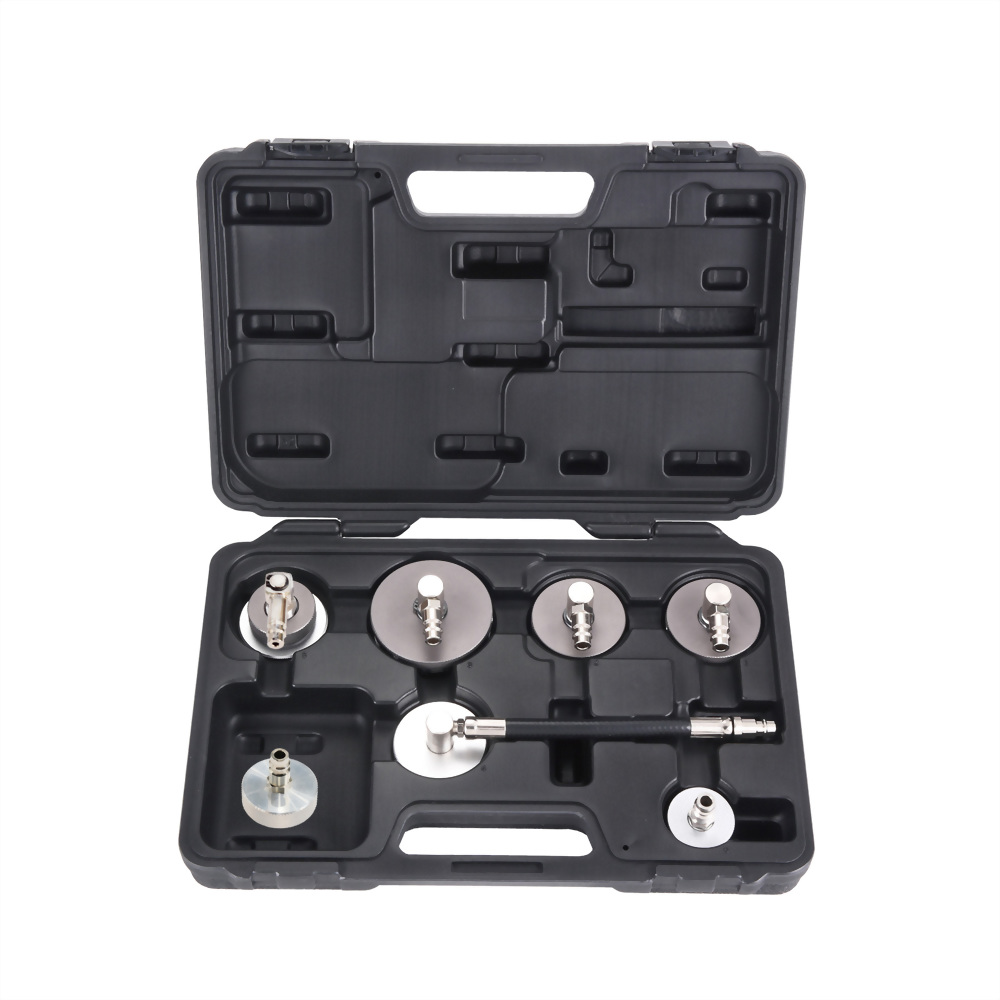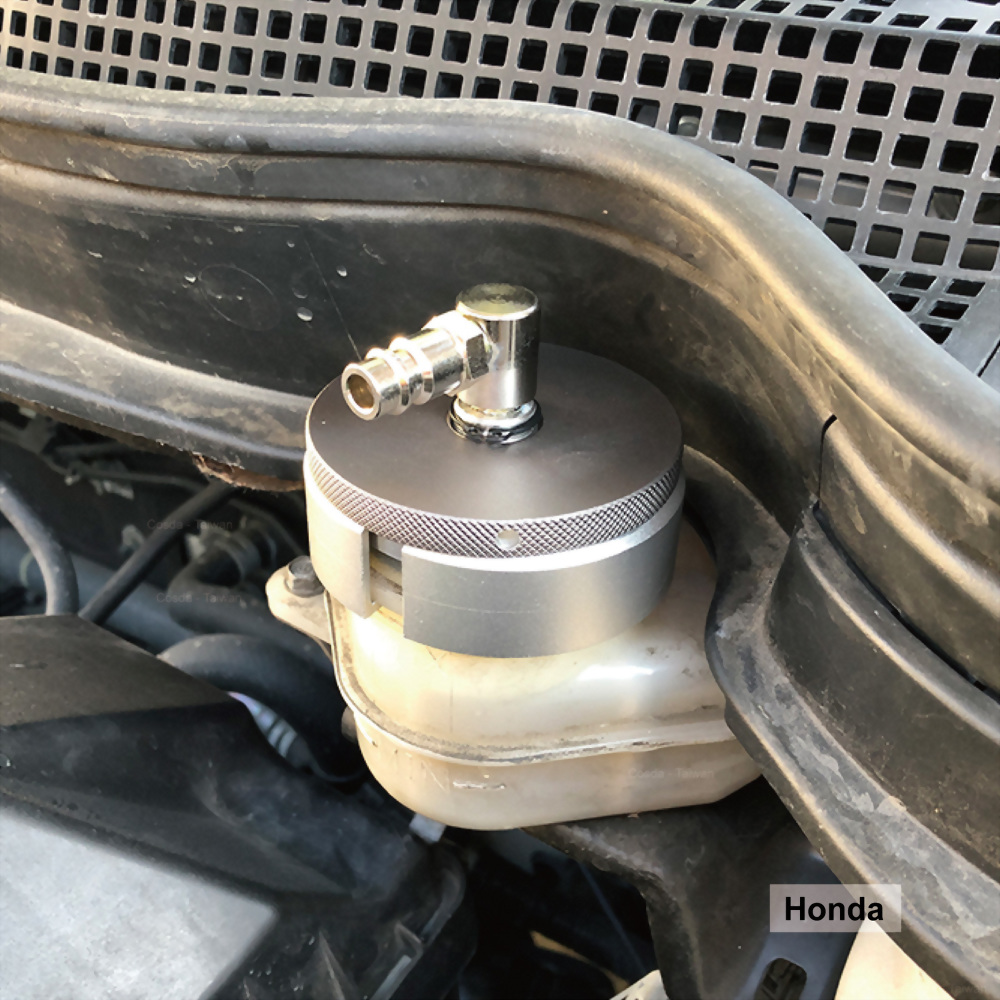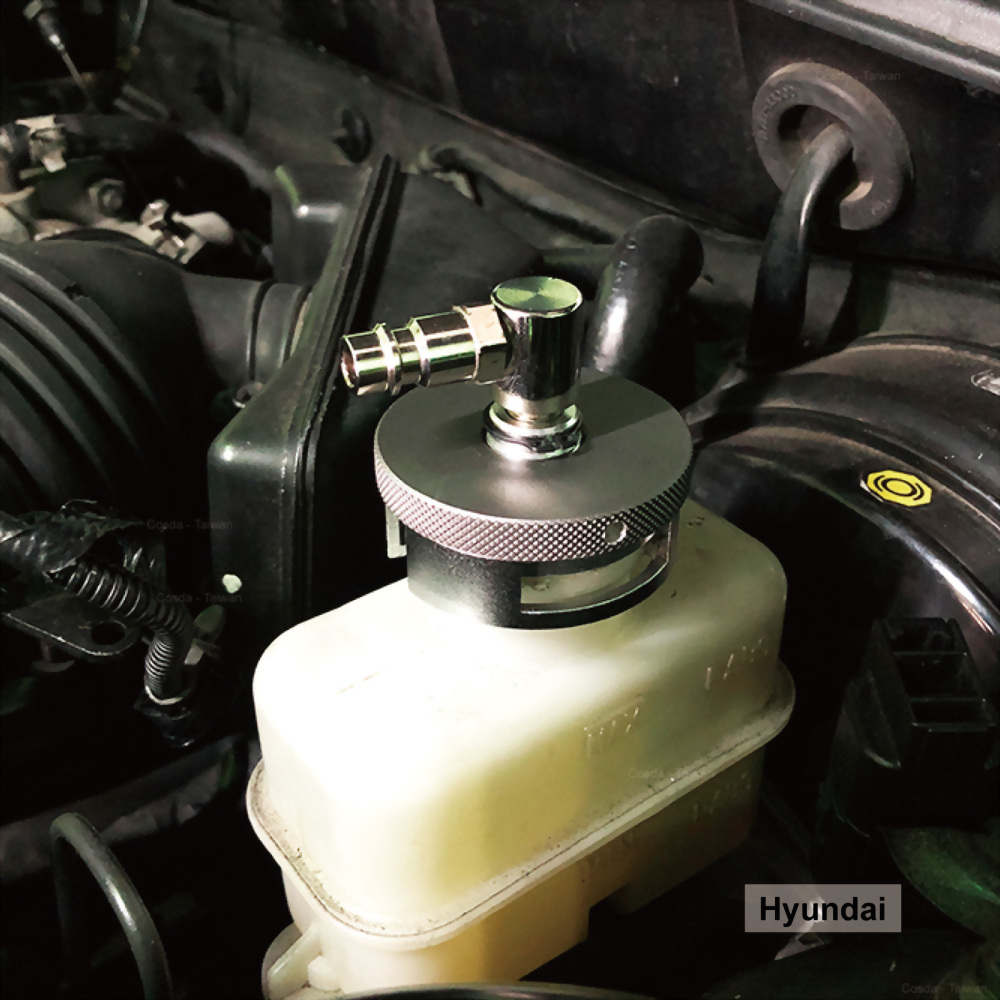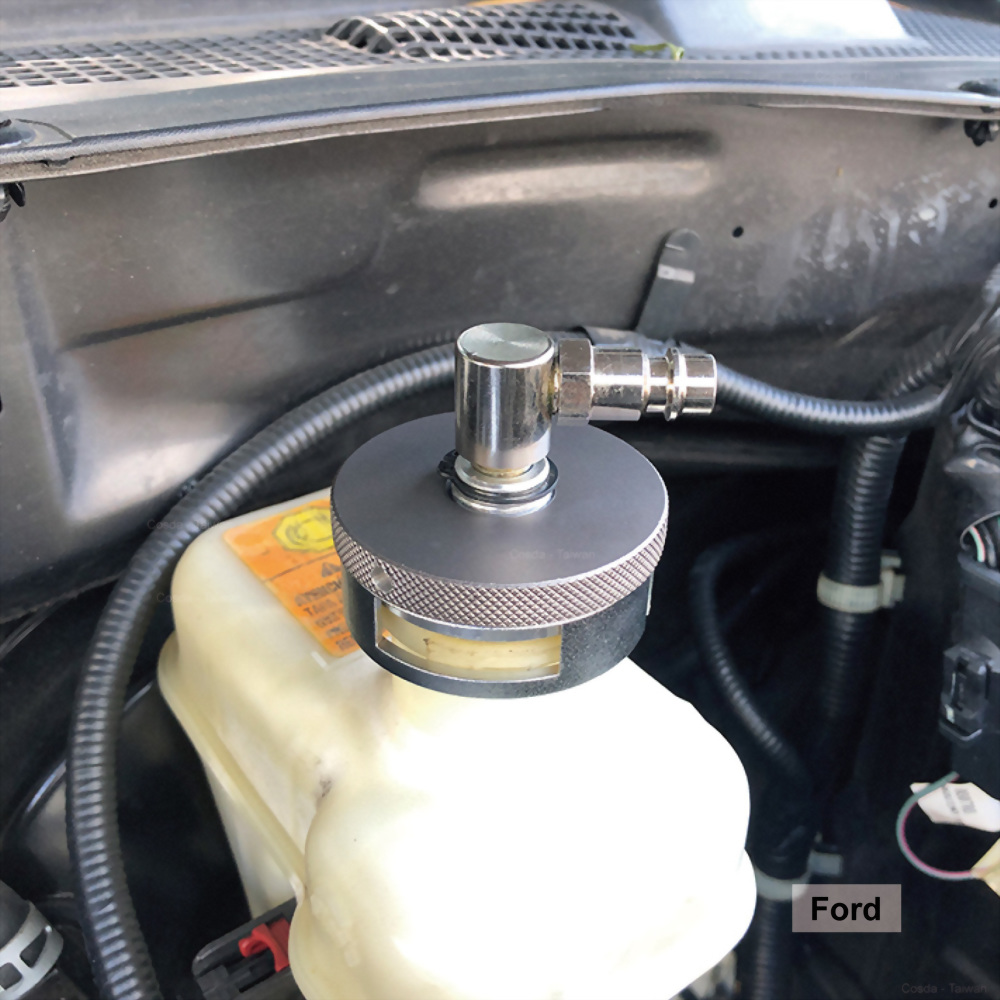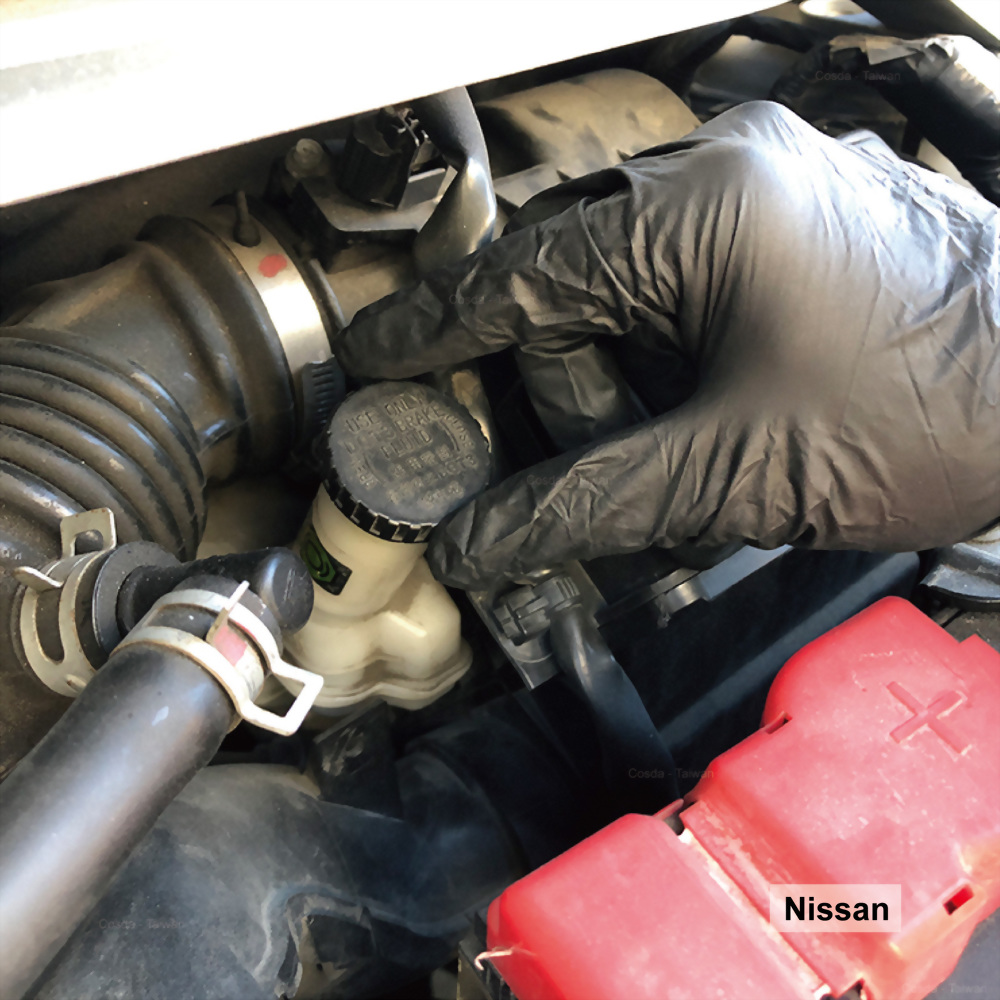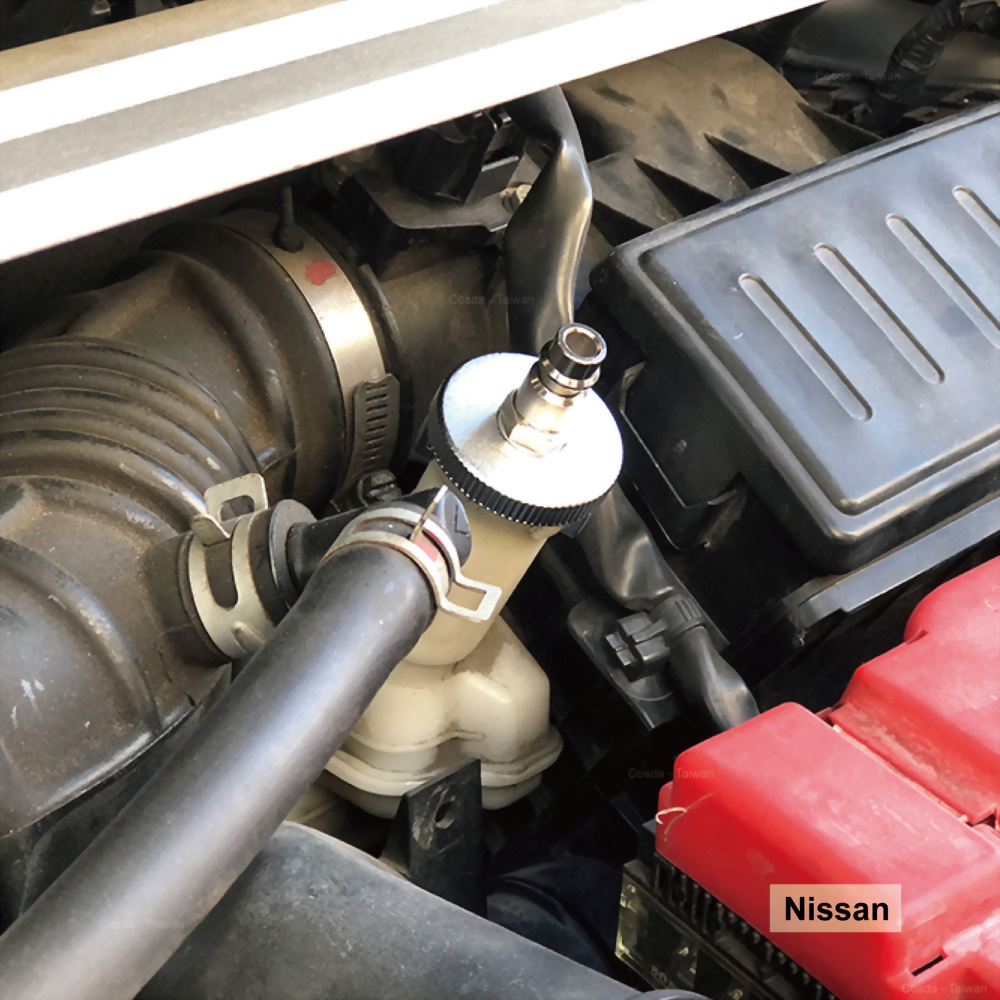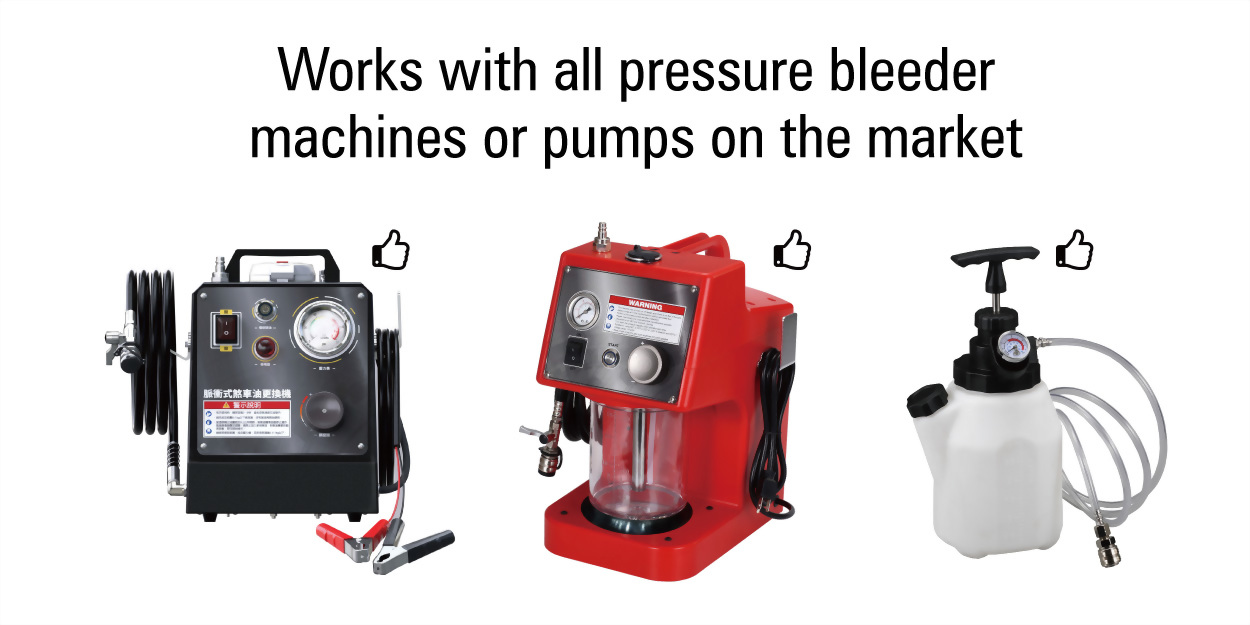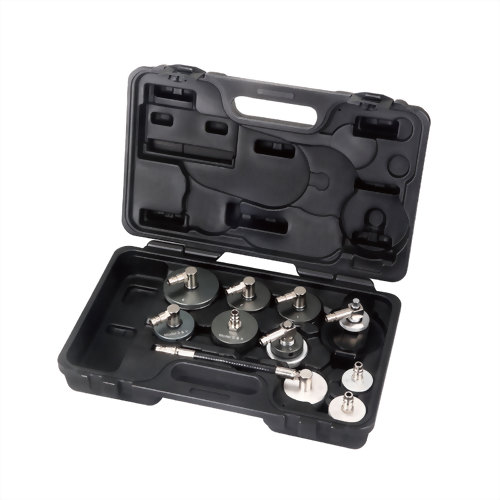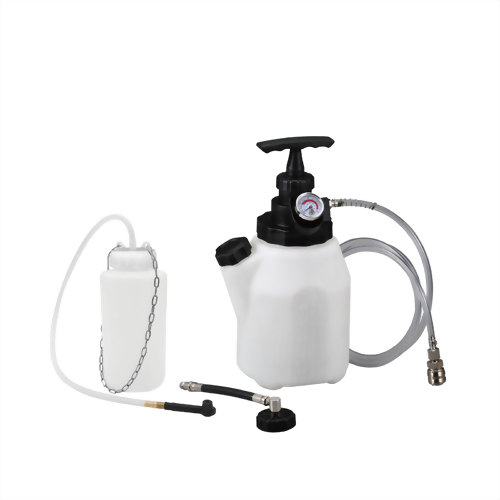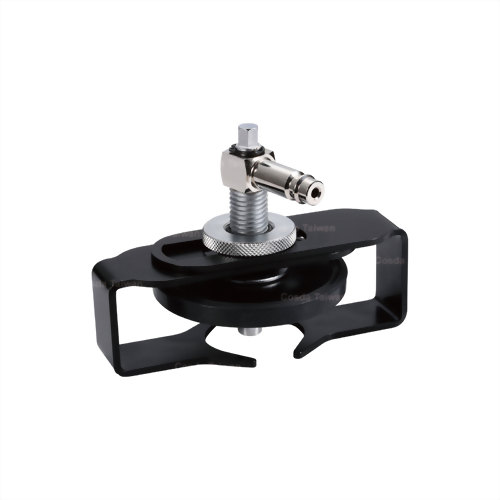Brake Bleeder Adapter Set (7 pcs)
• Covers at least 92% of all the common vehicles on the market
• 7 adapters fit the most common types of vehicles, for example, Audi, BMW, Chrysler, Citroen, Dodge, Fiat, Hyundai, Jaguar, Jeep, Kia, Land Rover, Mazda, Mercedes-Benz, Mitsubishi, Nissan, Opel, Peugeot, Renault, Toyota, Volkswagen, and Volvo
• Most adapters have a swivel 90° fitting to tackle limited space problems
• Aluminum-made adapter holds high pressure, suitable for most pressure bleeding works that require 2 bar / 30 psi
• Suitable for changing DOT 3 and DOT 4 brake fluids, but NOT SUITABLE for changing DOT 5.1

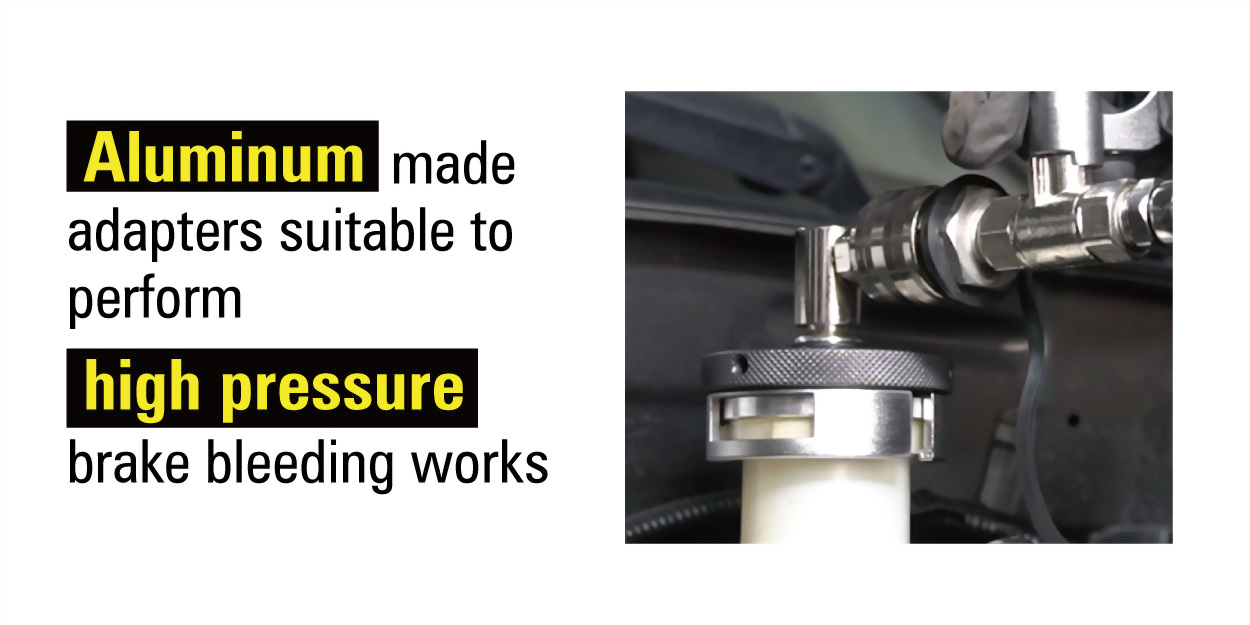
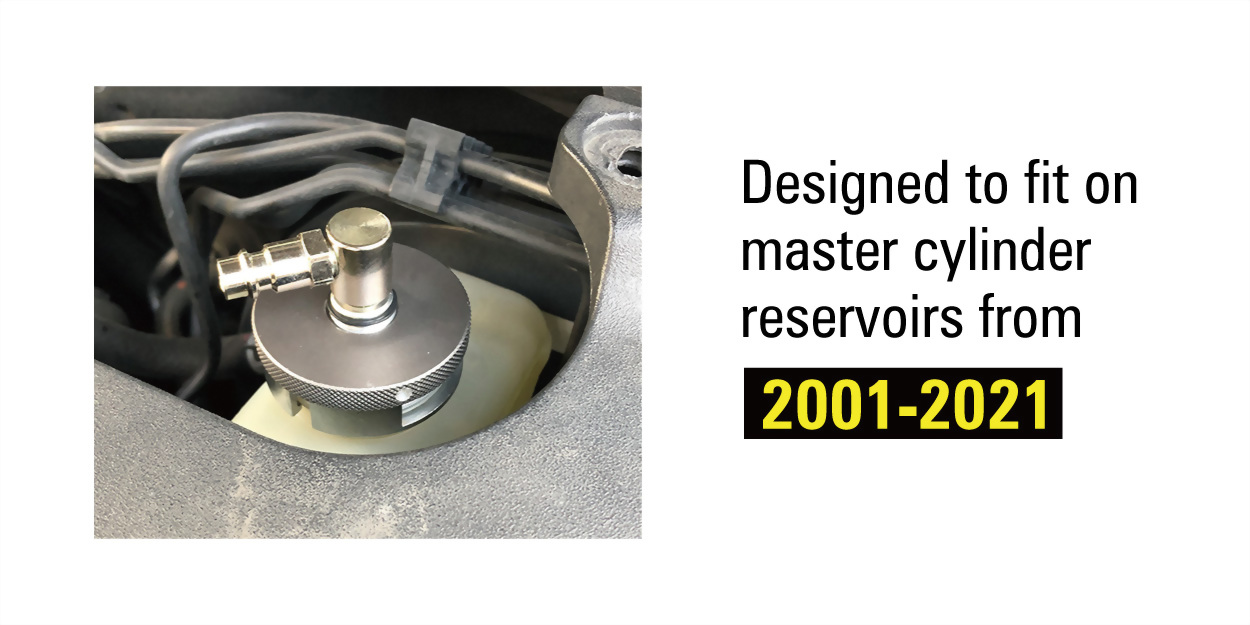
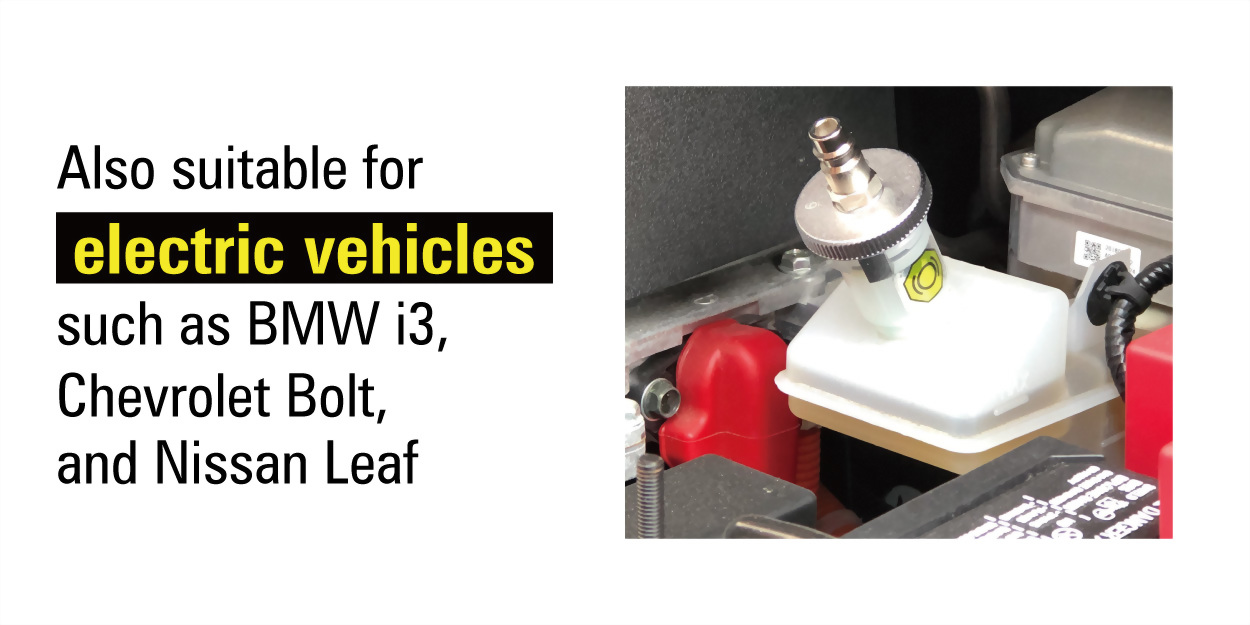
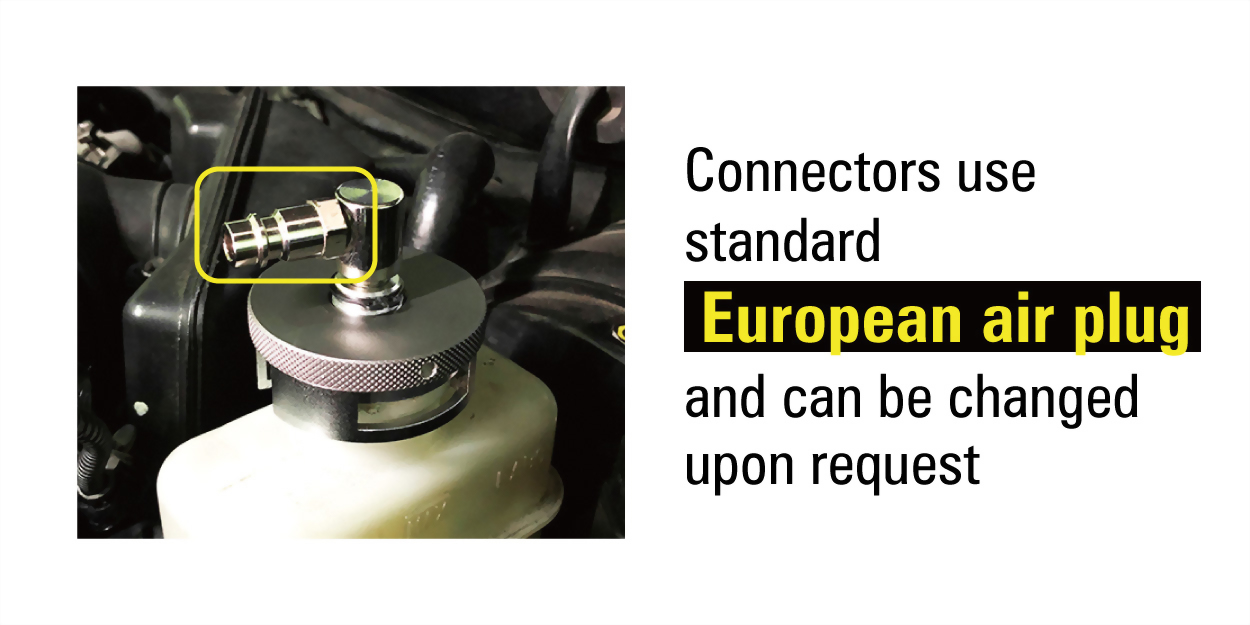
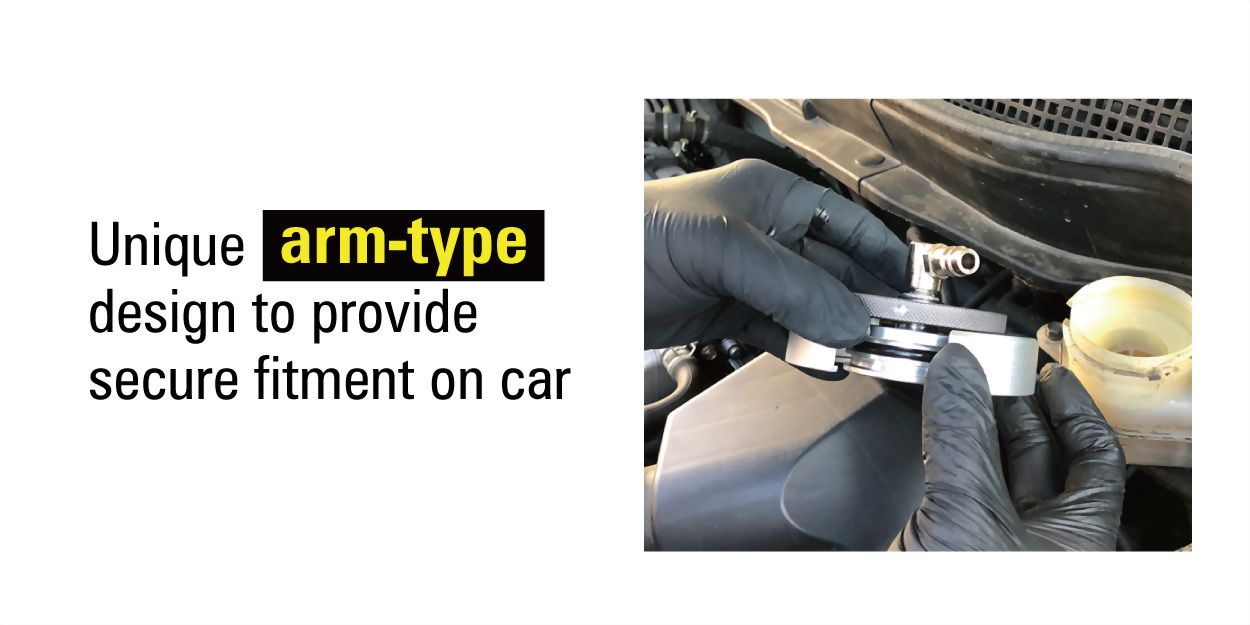
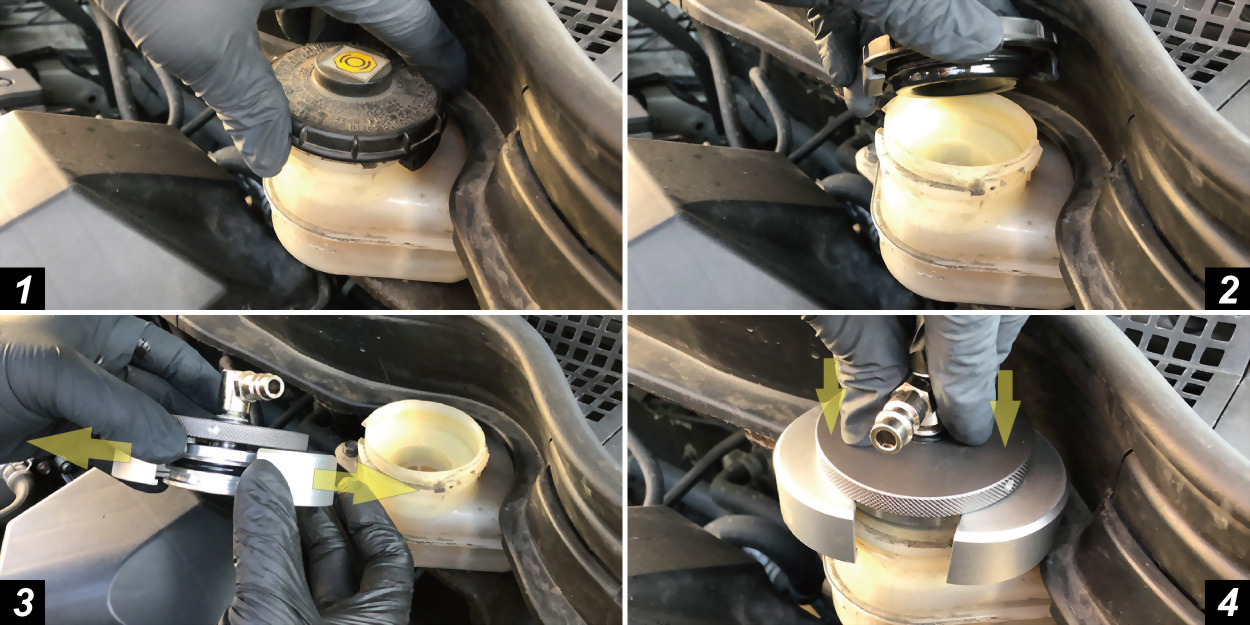


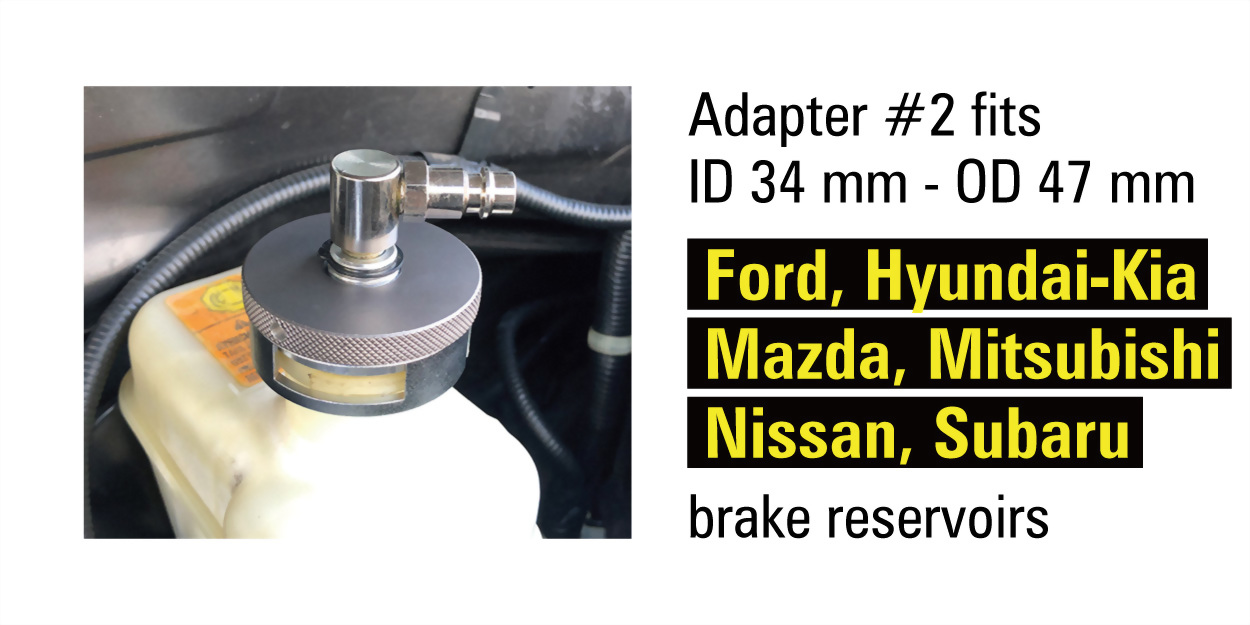
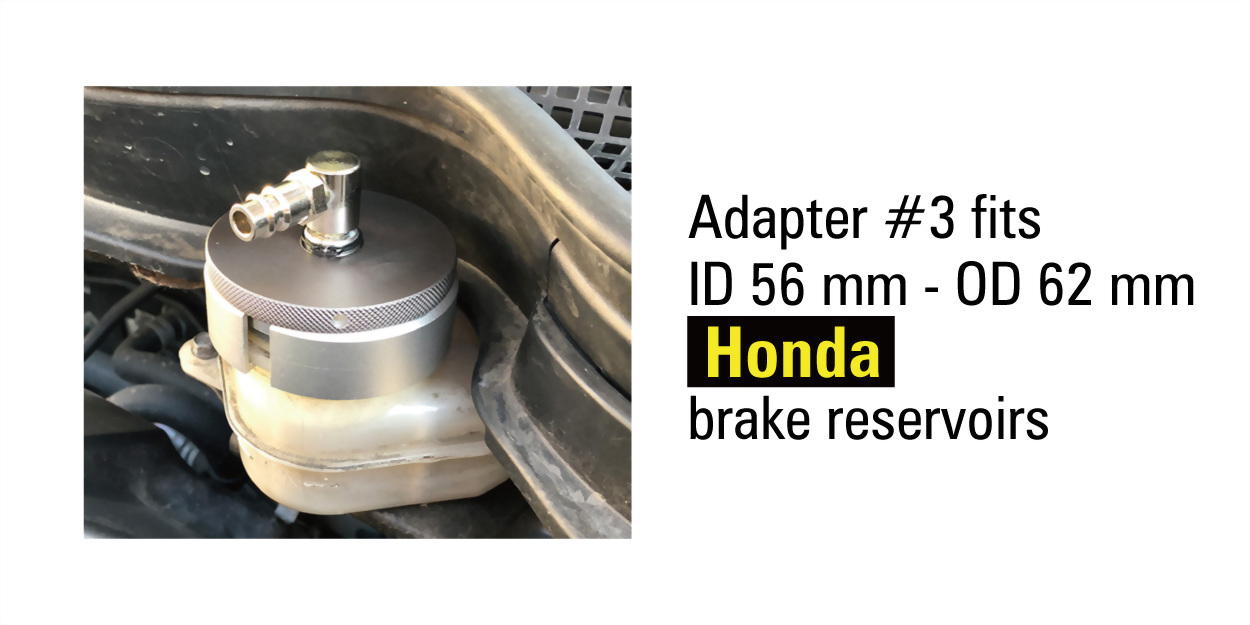
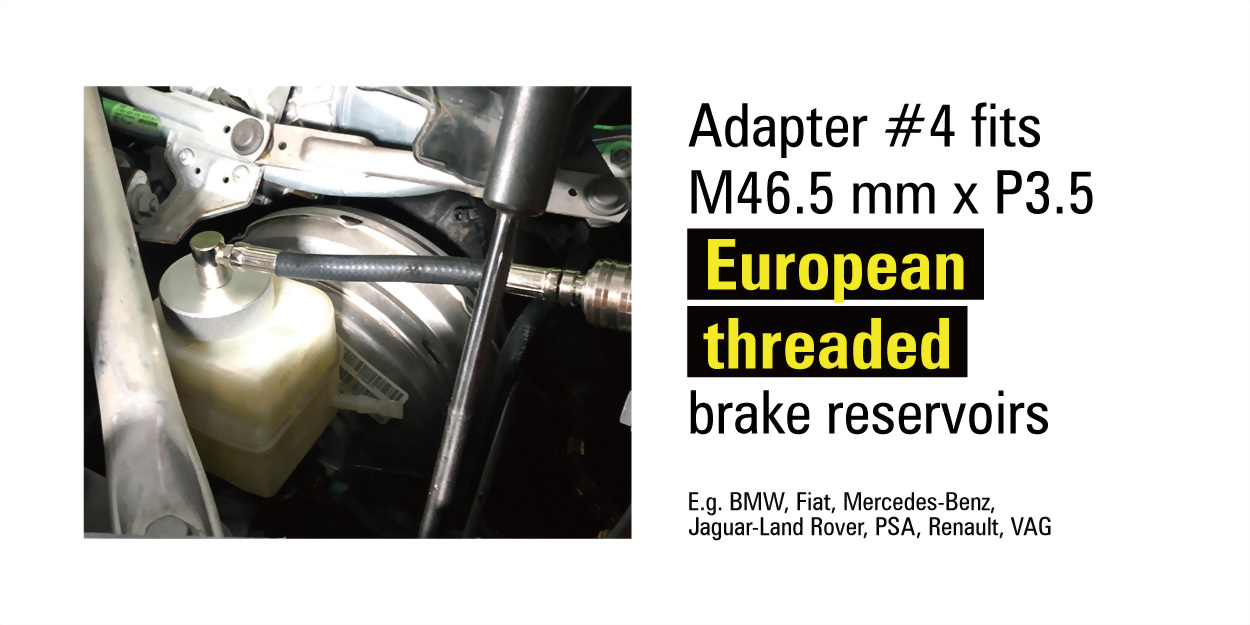
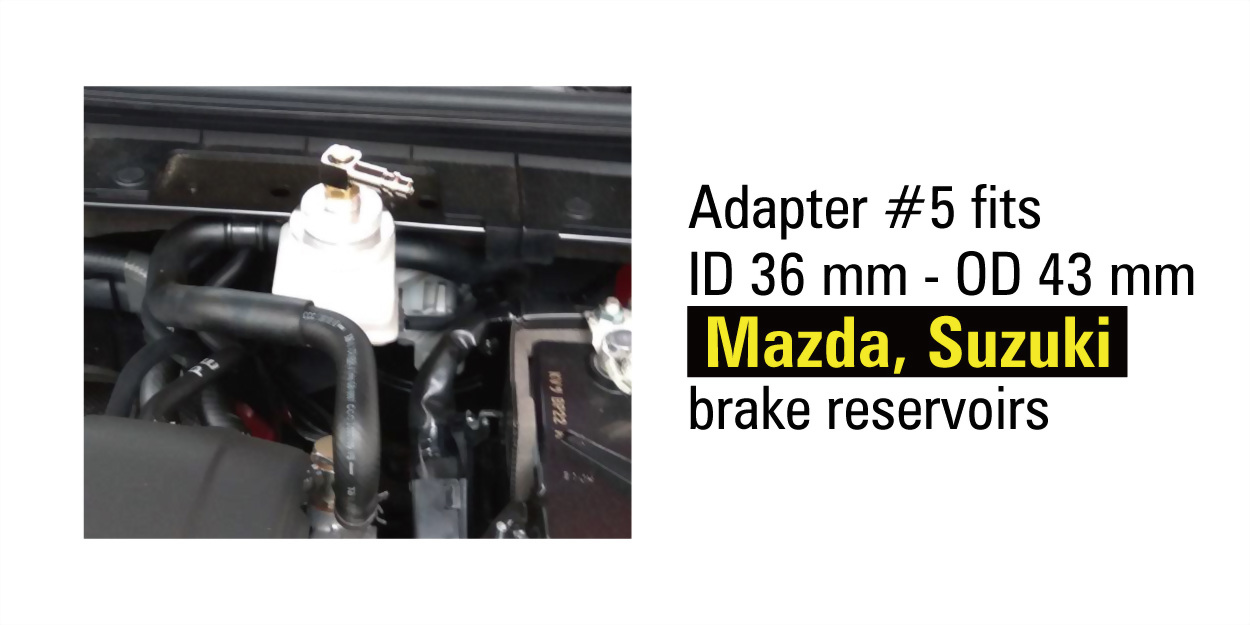
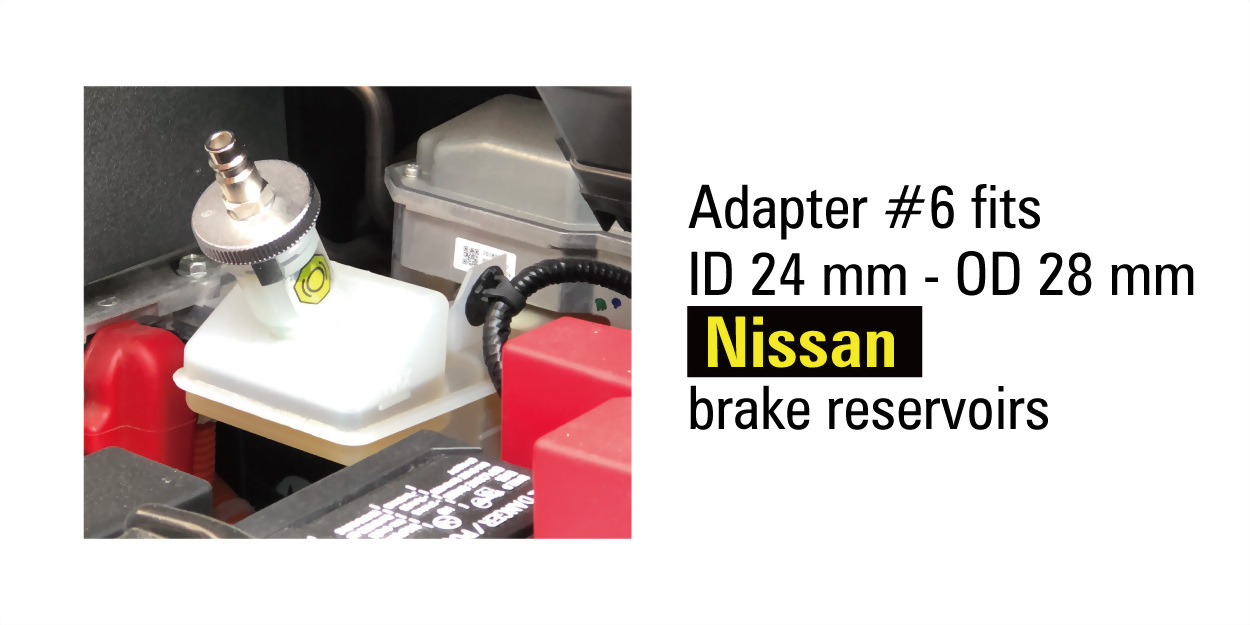
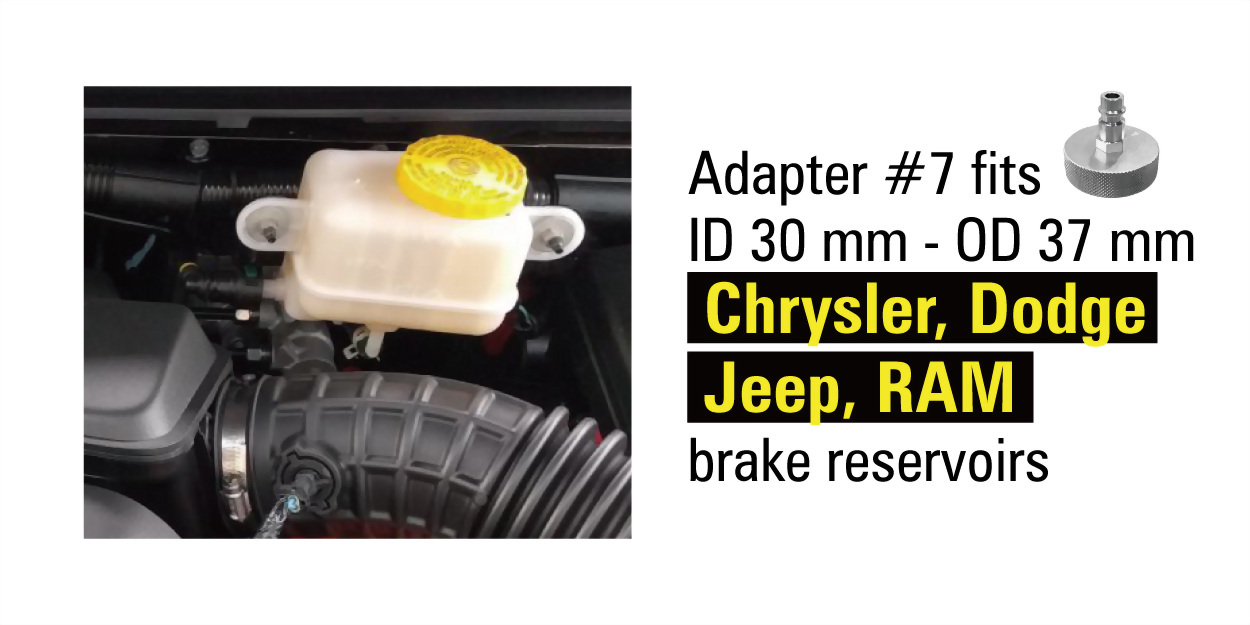
What are the properties of brake fluid?
Brake fluid is a specialized hydraulic fluid used in the brake systems of vehicles. Its properties are carefully engineered to ensure safety, performance, and longevity of the brake system. Here are the key properties of brake fluid:
1. Boiling Point:
- High Boiling Point: Brake fluid must have a high boiling point to prevent it from vaporizing under the high temperatures generated during braking. If the fluid boils, it can lead to vapor lock, which reduces braking efficiency.
- Wet Boiling Point: This is the boiling point of brake fluid after it has absorbed a certain amount of moisture (typically after prolonged use). It should remain high enough to ensure safety even when the fluid is not new.
2. Viscosity:
- Brake fluid must maintain consistent viscosity across a wide range of temperatures. This ensures reliable brake operation in both extreme cold and hot conditions.
3. Hygroscopic Nature:
- Brake fluid is hygroscopic, meaning it absorbs moisture from the air. This helps prevent moisture from pooling in the brake system, which could lead to corrosion and brake failure. However, this also necessitates regular fluid changes.
4. Corrosion Resistance:
- Brake fluid contains additives that protect the metal components of the brake system from rust and corrosion.
5. Lubricating Properties:
- It must provide sufficient lubrication to prevent wear and tear on moving parts within the brake system, such as the master cylinder and calipers.
6. Chemical Stability:
- Brake fluid must be chemically stable over time, resisting oxidation and degradation under various operating conditions.
7. Compatibility:
- It must be compatible with the rubber and plastic components used in brake systems to prevent swelling, softening, or deterioration of these materials.
8. Non-Compressibility:
- Brake fluid is designed to be non-compressible, meaning it transfers the force applied to the brake pedal directly to the brake calipers or drums without any loss of pressure.
These properties are critical for ensuring that the brake fluid performs its function effectively, providing reliable and safe braking under all driving conditions. Different types of brake fluids (e.g., DOT 3, DOT 4, DOT 5) have variations in these properties to suit specific vehicle requirements.
Why do we need to change brake fluid?
Changing brake fluid is essential for maintaining the performance and safety of a vehicle's braking system, and Cosda has several tools that can help you change the brake fluid, and here are the key reasons why it is necessary to change the brake fluid:
1. Prevention of Brake Fluid Contamination: Over time, brake fluid absorbs moisture from the air. This can lead to the formation of rust and corrosion within the brake system, potentially causing components to fail.
2. Maintaining Brake Performance: Brake fluid operates under high pressure and temperature. Moisture-laden fluid can lower the boiling point, leading to vapor formation under high temperatures. This can cause brake fade or a spongy brake pedal, reducing braking efficiency.
3. Preventing Brake System Damage: Contaminated brake fluid can cause seals and other components within the brake system to deteriorate more quickly, leading to leaks and loss of braking power.
4. Safety: Proper brake fluid is essential for ensuring the hydraulic pressure required to effectively stop the vehicle. Compromised brake fluid can lead to longer stopping distances and reduced control in emergency situations.
Regularly changing brake fluid as part of routine maintenance helps ensure the braking system remains effective, reliable, and safe.
| Package | Blow molded case (black) | |
| Packing | 10 sets in a master carton | |
| Weight per set | 1.8 kg | 4.0 lbs |
| Net weight per carton | 17.9 kg | 39.4 lbs |
| Gross weight per carton | 18.9 kg | 41.5 lbs |
| Size per set | 35.0 × 24.0 × 8.6 cm | 13.8 × 9.4 × 3.4 inch |
| Size per carton | 49.5 × 44.5 × 36.5 cm | 19.5 × 17.5 × 14.4 inch |
| Volume per carton | 0.08 CBM | 2.8 CUFT |
| Case label size | 20.0 × 7.0 cm | 7.9 × 2.8 inch |

| No. | Image | Cosda No. | Description | |||||
|---|---|---|---|---|---|---|---|---|
| 1 | 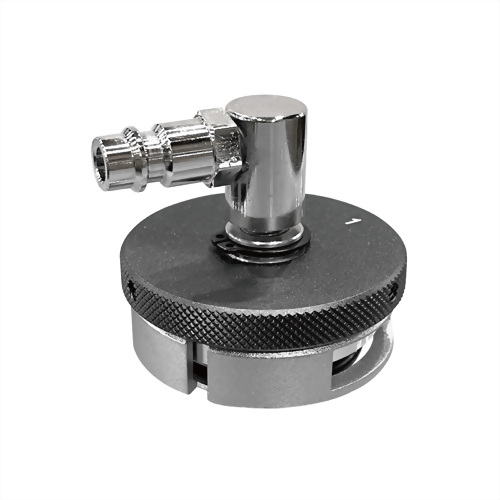 |
SD-1209-1 | Brake Bleeder Adapter for Toyota | More |
||||
|
- Specifications
|
||||||||
|
|
||||||||
| 2 | 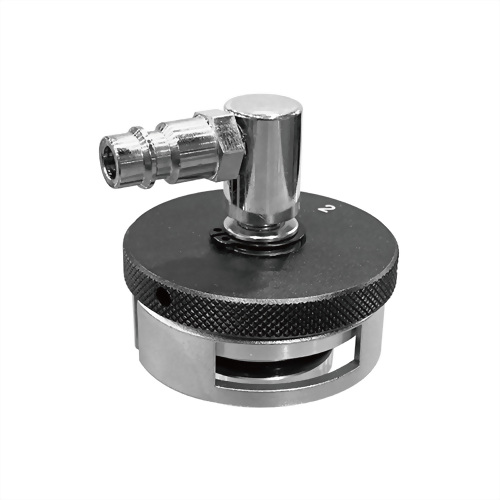 |
SD-1209-2 | Brake Bleeder Adapter for Ford, Hyundai, Mazda, Mitsubishi, Nissan, Subaru | More |
||||
|
- Specifications
|
||||||||
|
|
||||||||
| 3 | 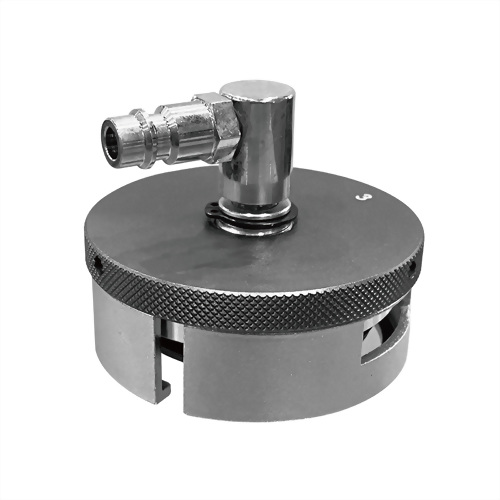 |
SD-1209-3 | Brake Bleeder Adapter for Honda | More |
||||
|
- Specifications
|
||||||||
|
|
||||||||
| 4 | 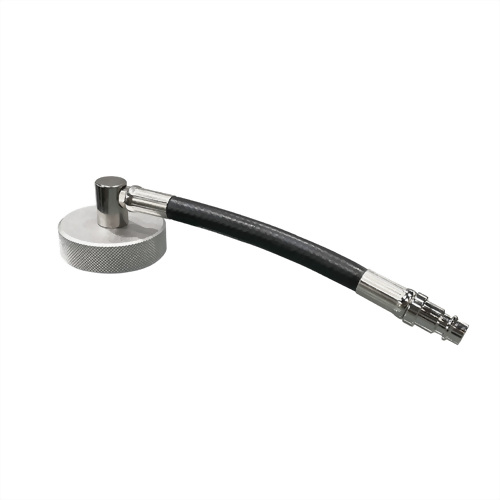 |
SD-1209-4 | Brake Bleeder Adapter for European Vehicles | More |
||||
|
- Specifications
|
||||||||
|
|
||||||||
| 5 | 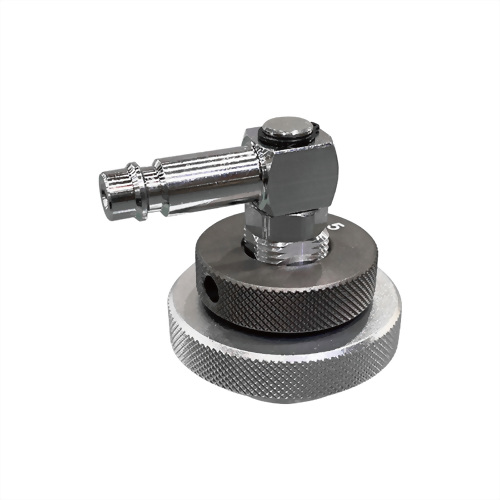 |
SD-1209-5 | Brake Bleeder Adapter for Mazda and Suzuki | More |
||||
|
- Specifications
|
||||||||
|
|
||||||||
| 6 | 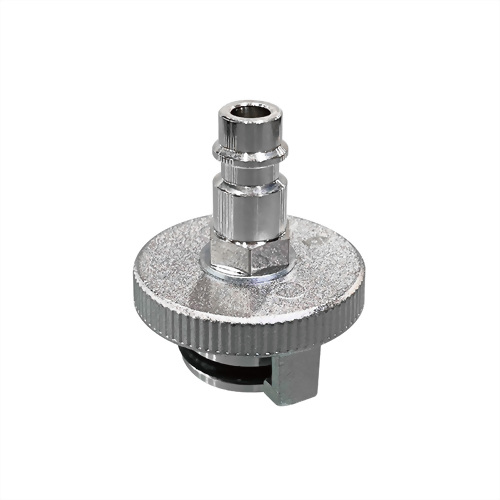 |
SD-1209-6 | Brake Bleeder Adapter for Nissan | More |
||||
|
- Specifications
|
||||||||
|
|
||||||||
| 7 | 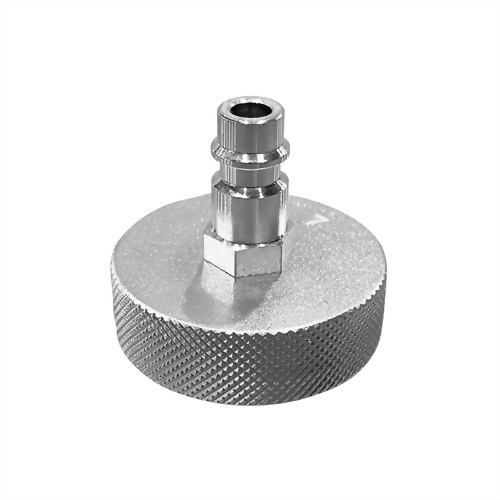 |
SD-1209-7 | Brake Bleeder Adapter for Chrysler, Dodge, Jeep and Ram | More |
||||
|
- Specifications
|
||||||||
| Suggested HS code |
82055990909 |
| MOQ with laser marking | 40 sets |
| MOQ without laser marking | 20 sets |
| Laser marking cost | + TWD 3 on each piece |
|
Not for sale in |
China and Taiwan |


